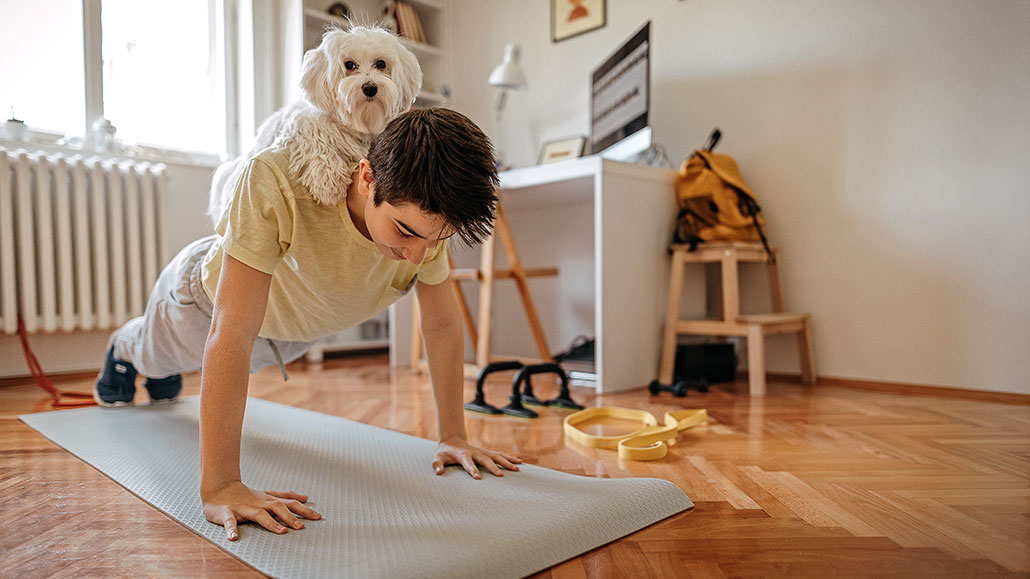Let’s learn about exercise
Moving the body is good for the body, but it’s also good for the brain

Exercise takes many forms. And if you do it at home, your pets might even help out.
mixetto/iStock/Getty Images Plus
Exercise might seem like a chore sometimes, especially when we get told so often that we should exercise more. But we need to get up and start moving. Many of us spend too much time sitting and staring at screens. Most teen girls don’t meet the standards for physical activity. Getting scolded about this, though, doesn’t really help. And that’s too bad, because exercise can be both fun and good for the body and the brain.
Exercise is good for your muscles, of course. But it’s also good for your bones. Getting exercise (and plenty of sleep) helps tweens and teens build tough skeletons. And teens who exercise grow up into adults with stronger bones.
Daily motion is also good for the brain. Exercise can increase how much oxygen and blood gets to the brain, and even how the brain is structured. Working out can produce chemicals in our bodies that might help prevent depression. And a workout after learning something can help us form and retain memories. Heck, even our gut microbes like a good workout!
So maybe it’s no surprise that so many scientists study exercise. There are scientists, for instance, who study what makes winning runners so fast. Others study running lizards and astronauts in space to find out how to keep humans healthy both on and off planet Earth. And some study the science of sports themselves, trying to figure out what makes an athlete stick the perfect landing.
Want to know more? We’ve got some stories to get you started:
To remember something new: Exercise! People who exercised strenuously for a half hour after learning something new cemented those memories. But the trick: Wait four hours before getting the heart pumping vigorously. (7/29/2016) Readability: 7.9
Strongest bones come from Goldilocks recipe of exercise and rest: Building strong bones for life depends on adolescents staying active and getting enough sleep. Sometimes a lot of sleep, like 11 hours! (12/18/2020) Readability: 7.1
Our gut microbes love a good workout: Technology shows how microbes in the body respond to exercise. That helps scientists understand why those microbes keep athletes healthy. (5/21/2020) Readability: 7.9
Explore more
Explainer: All about the calorie
Body heat due to exercise may reduce hunger
Exercise builds brawn — and brains
Cool Jobs: Researchers on the run
Active bodies build stronger brains
Active teens build strong bones for life
Activities
Running around outside? It’s a great time to study your heart rate. You can calculate your heart rate by hand, and then see how much different kinds of activity speed your heart rate up or slow it down. How does it compare when you’re walking? How about running? What about sitting still?







